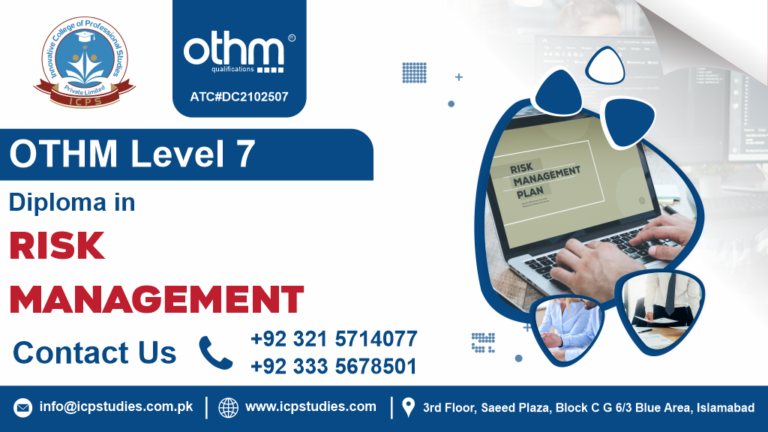In today’s fast-paced and ever-changing business environment, managing risk is more critical than ever. Organizations face a multitude of risks that can impact their operations, reputation, and bottom line. To navigate these challenges effectively, a robust risk management framework is essential. This is where ISO 31000 comes into play.
ISO 31000 is an international standard for risk management. It provides guidelines, principles, and a framework for managing risk effectively across various sectors and industries. Unlike other standards, ISO 31000 is not specific to any particular industry or sector, making it a versatile and universally applicable tool for risk management.
In an increasingly complex and uncertain world, effective risk management is a strategic imperative for organizations seeking sustainable success. ISO 31000 provides a flexible and principles-based approach to risk management, empowering organizations to anticipate, adapt to, and capitalize on risks and opportunities. By embracing ISO 31000, organizations can foster a risk-aware culture, enhance decision-making processes, and navigate uncertainty with confidence and resilience.
All About ISO 31000 — Risk Management System
Course Overview
ISO 31000 is an international standard developed by the International Organization for Standardization (ISO) that provides guidelines and principles for implementing a risk management system within organizations. Published in 2009 and revised in 2018, ISO 31000 offers a framework that helps organizations of all types and sizes identify, assess, treat, monitor, and communicate risks effectively.
ISO 31000 serves as a valuable resource for organizations seeking to systematically identify, assess, treat, monitor, and communicate risks to achieve their objectives and sustain long-term success in a dynamic and uncertain business environment.
Study Units
- Introduction to Risk Management
- Understanding ISO 31000 Framework
- Establishing the Context for Risk Management
- Risk Identification and Assessment
- Risk Treatment and Mitigation
- Monitoring and Review
- Risk Communication and Consultation
- Integration with Organizational Processes
- Case Studies and Practical Applications
- Continuous Improvement and Adaptation
Entry Requirements
- Age Requirement: Candidates should be at least 18 years old.
- Professional Background: Applicants should have relevant experience in risk management, project management, or a related field.
- Educational Qualifications: A minimum of a Level 3 qualification or equivalent in business, management, or a related area is generally recommended.
- Knowledge of Risk Management Principles: Familiarity with basic concepts and principles of risk management is beneficial.
- Training Experience: Prior experience in delivering training or participating in risk management activities is an advantage.
- Communication Skills: Strong verbal and written communication skills are essential for understanding and applying risk management concepts.
- Basic IT Skills: Proficiency in using IT tools for preparing documentation and presentations related to risk management.
- Commitment to Continuous Learning: A willingness to engage in ongoing professional development and stay updated on risk management practices and standards.
These requirements may vary by training provider, so it’s advisable to check with the specific organization offering the ISO 31000 training for their exact criteria.
4o mini
The ISO 31000 — Risk Management System course is designed for:
- Risk Management Professionals: Individuals responsible for identifying, assessing, and managing risks within organizations.
- Project Managers: Those managing projects who need to implement effective risk management practices.
- Quality Assurance and Compliance Officers: Professionals ensuring that organizational processes comply with risk management standards.
- Senior Management and Executives: Leaders looking to integrate risk management into strategic decision-making.
- Health and Safety Managers: Individuals focused on maintaining safety standards through effective risk assessment.
- Auditors and Internal Control Professionals: Those involved in evaluating organizational risk management processes.
- Consultants: Professionals advising organizations on risk management frameworks and best practices.
- Employees in Any Organization: Individuals seeking to understand and apply risk management principles within their roles.
This course is ideal for anyone looking to enhance their knowledge and skills in risk management according to the ISO 31000 standard, ensuring effective organizational practices.
Entry Requirements
- Age Requirement: Candidates should be at least 18 years old.
- Professional Background: Applicants should have relevant experience in risk management, project management, or a related field.
- Educational Qualifications: A minimum of a Level 3 qualification or equivalent in business, management, or a related area is generally recommended.
- Knowledge of Risk Management Principles: Familiarity with basic concepts and principles of risk management is beneficial.
- Training Experience: Prior experience in delivering training or participating in risk management activities is an advantage.
- Communication Skills: Strong verbal and written communication skills are essential for understanding and applying risk management concepts.
- Basic IT Skills: Proficiency in using IT tools for preparing documentation and presentations related to risk management.
- Commitment to Continuous Learning: A willingness to engage in ongoing professional development and stay updated on risk management practices and standards.
These requirements may vary by training provider, so it’s advisable to check with the specific organization offering the ISO 31000 training for their exact criteria.
4o mini
FAQs about ISO 31000 — Risk Management System






